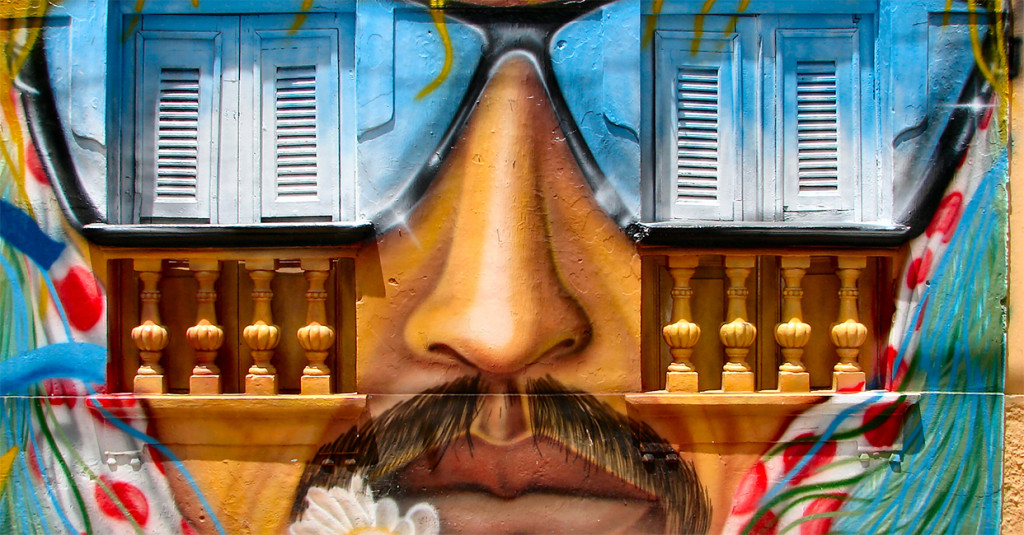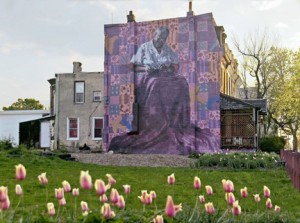
Graffiti, whose roots lay Ancient Egypt, Ancient Greece, and the Roman Empire, is prevalent throughout New York State. From the concrete walls of New York City’s boroughs to a train bridge in the North Country to a former grain processing plant in Buffalo, the mixture of mystery, color and illegitimacy is almost always sure to turn heads of passers by. Though the process of doing graffiti is sometimes illegal, it is increasingly more common to be commissioned as private or public art. But why?
Professor Wolf of SUNY New Paltz explains:
For example, if your graffiti, as a mark on someone else’s property, is meant as a political statement against property ownership, the graffiti also takes possession (symbolically, at least) of this property. On the other hand, if your graffiti appears on a wall of a derelict building, it may remind us that we are neither caring for our property nor respecting how its neglect might negatively affect the community.
In this instance, the graffiti artist/vandal can be seen as having more respect for the property than the owner; the graffiti may well call attention to the neglect and therefore may even create or renew a visual or conceptual interest in the property (whether owned by an individual or by the government).
Then there is the case of Banksy, the famous British author of a distinctive stencil style of graffiti. His graffiti on the wall of a store in Wood Green (located in north London) led the owner of the building to cut out the section of the wall that included Banksy’s work and to sell it at auction (it reportedly sold for over a million dollars). Illegal marking was transformed, magically, into a precious and valuable object. The title of the work? Slave Labour.
As art, graffiti exposes our deep contradictions as a society. If I write, draw, stencil, or spray graffiti on someone else’s property, in legal terms this constitutes an act of vandalism. Yet we are fascinated by clever and interesting graffiti, just as we are by compelling art created to be exhibited in a museum or sold at a gallery. And then there is the phenomenon of exhibiting graffiti art in museums and galleries; two notable examples are the exhibition “Art in the Streets,” held at the Museum of Contemporary Art in Los Angeles in 2011, and, now, “Write of Passage,” on view at Red Bull Studios in New York City until November 23.
Professor Wolf continues to tell of a story that a SUNY New Paltz student wrote while reflecting on her personal experiences with graffiti:
“My cousin is a graffiti artist and would often ‘tag’ walls and skate parks throughout his adolescence. His friends began to hire him to do murals in their houses, on skateboards, clothing, or whatever they asked of him. The city of Albany, where he lives, began to take notice of his work and hired him to do graffiti round the city to cover up both poorly done and vulgar graffiti done by other people. However, because graffiti is still illegal, while working one day on one of his commissioned spaces he was arrested for doing graffiti. Even though he later had evidence from the city that he was hired to do it he still is on probation for the crime. It is quite hypocritical …[to] be recognized for…talent by one group of people and yet be punished [by this group] at the same time.”
 Name: Reva Wolf
Name: Reva Wolf
Capacity: Professor of Art History
Campus: SUNY New Paltz
Expertise: Metropolitan Museum of Art, Harvard University, and Princeton University Institute for Advanced Study Fellow. Author of Goya and the Satirical Print and Andy Warhol, Poetry, and Gossip in the 1960s. SUNY Chancellor’s Award – Excellence in Teaching (’10-’11).
Top photo via Bjørn Christian Tørrissen



Interesting topic Prof. Wolf. Living in Los Angeles, there is no avoiding graffiti. I see tags along the 101 freeway, and I also beautiful murals that sometimes I cannot believe it was done with a spray can. I also travel back and forth from LA to Medellin, Colombia. In Medellin, the mayor of the city invited graffiti artists from around the world to create graffiti art/ murals around the city. They were around for two weeks creating this awesome art. Similar to your cousin. Also in Los Angeles, there has been a high demand for graffiti experts where they use them to save the LA art scene, here is the link about it: https://blog.witness.net/uncategorized/what-is-in-high-demand-a-graffiti-expert-witness/.
Excellent views here. I have seen some truly remarkable pieces of “Graffiti” throughout the world, I put the phrase in quotes because it has generally a bad name. But the pieces I have seen on walls, old buildings, blocks of flats some 6 blocks high would all fit well in today’s modern art gallery’s.
No question, they are simply works of art. Some of the work where the artist takes into account the urban area too are amazing. They use the surroundings to their advantage and blend it in with the piece.
The whole ‘tagging’ thing is not really what I go for, but the huge street are murals and other urban art such as pavement work or chalk art is very impressive and not an act of vandalism in my view.
Thanks for putting this post together.
Regards,
John
Thank you, Prof Wolf for a worthwhile set of thoughts about this type of art, especially the point about contradiction. It gets at the juice and fire or whatever that is inside art. Like that, there is for me the wonder of improvisation…that even under pressure of discovery and punishment, such good composition, expression, and execution is possible and with such limited tools. It is even more “done in the open” than pleasant easel afternoons en plein air that we admire.